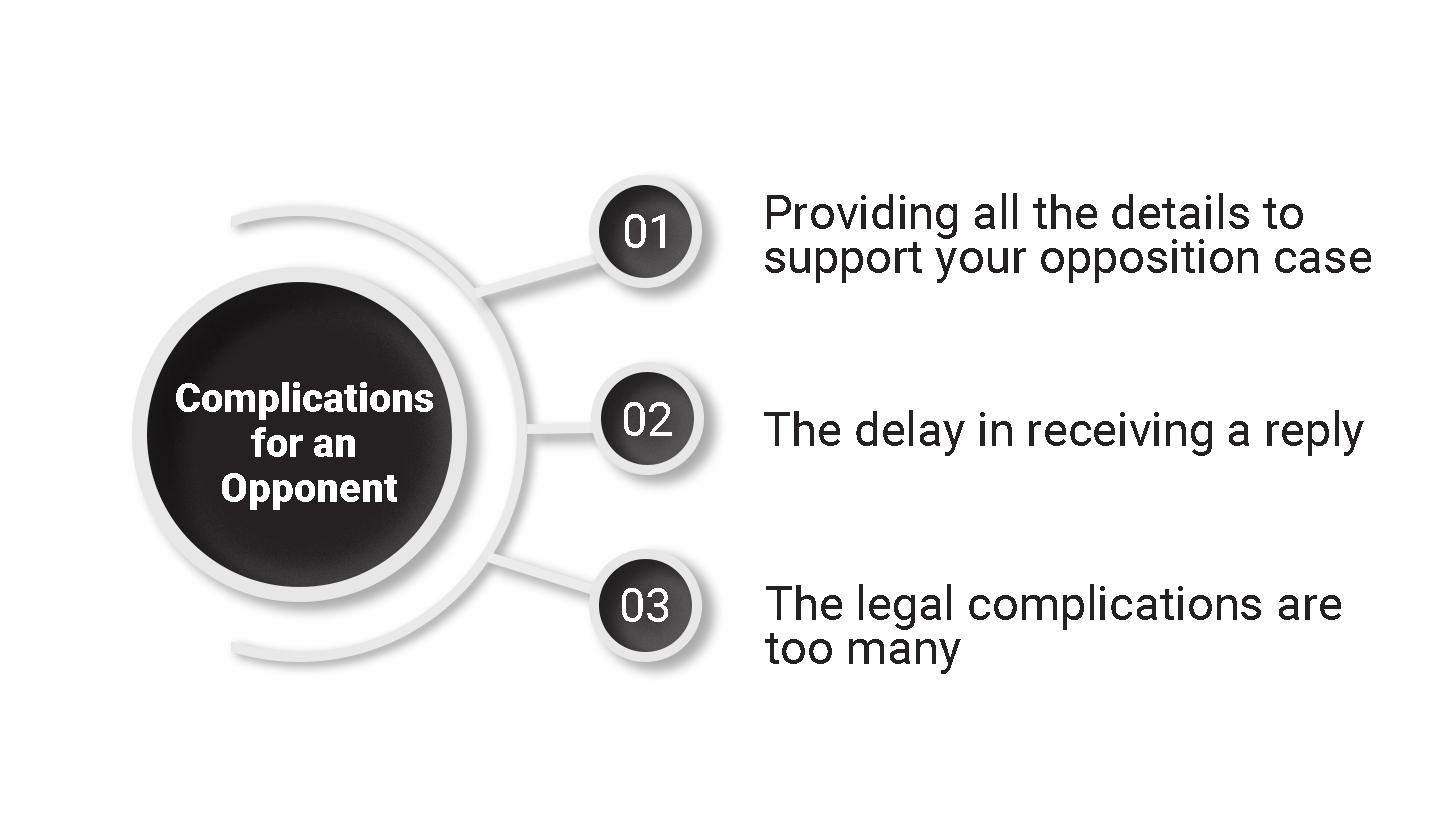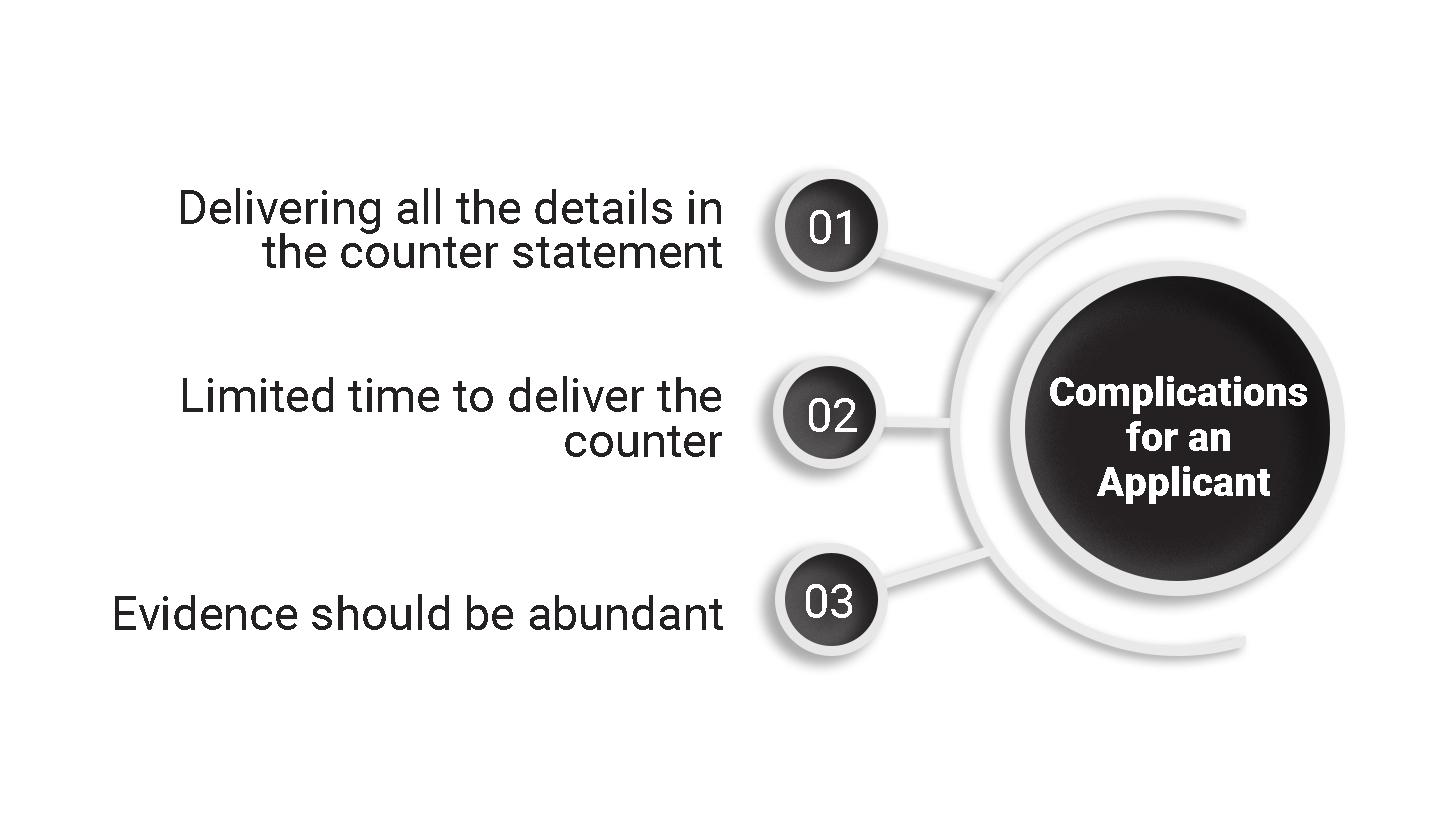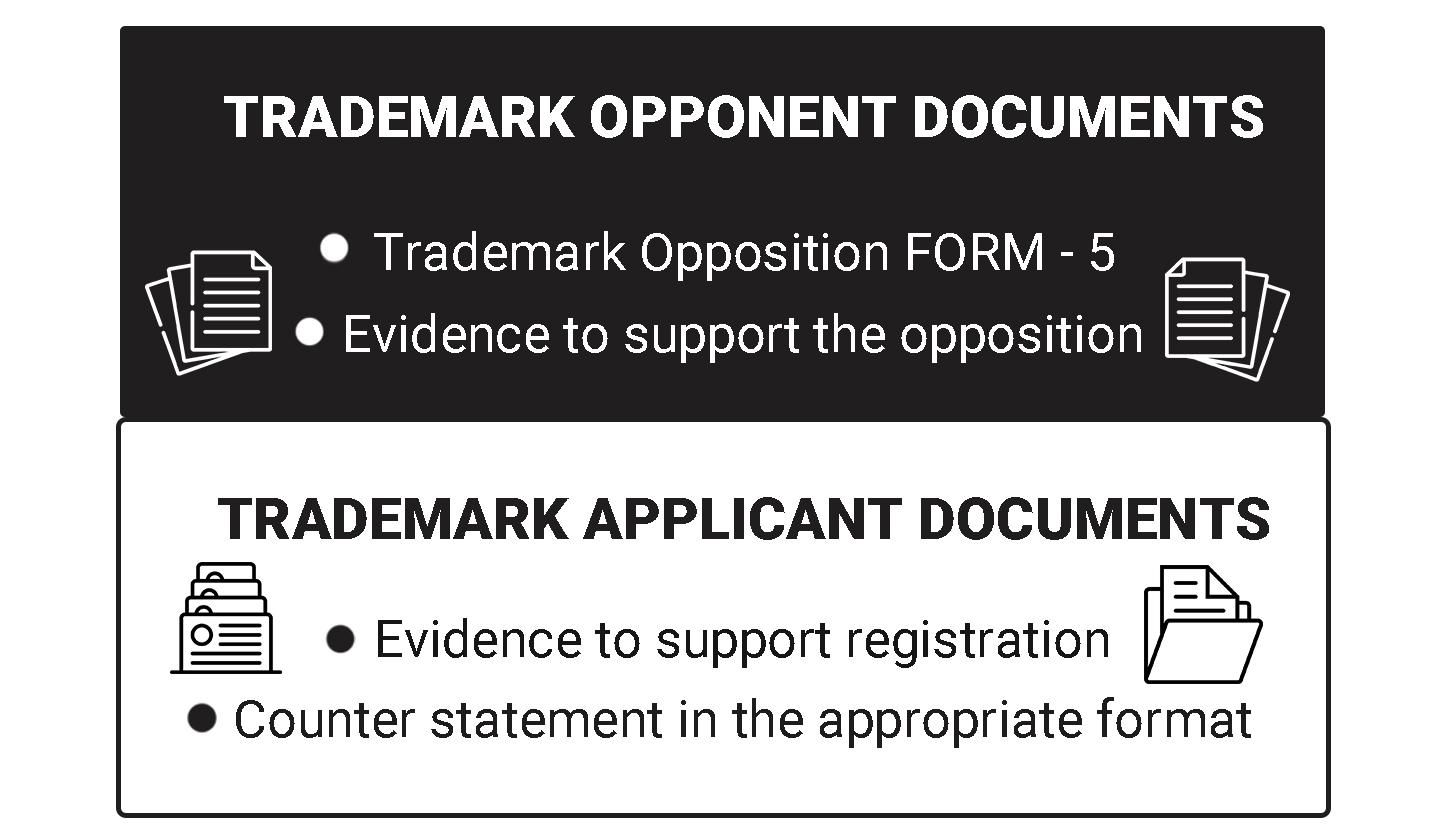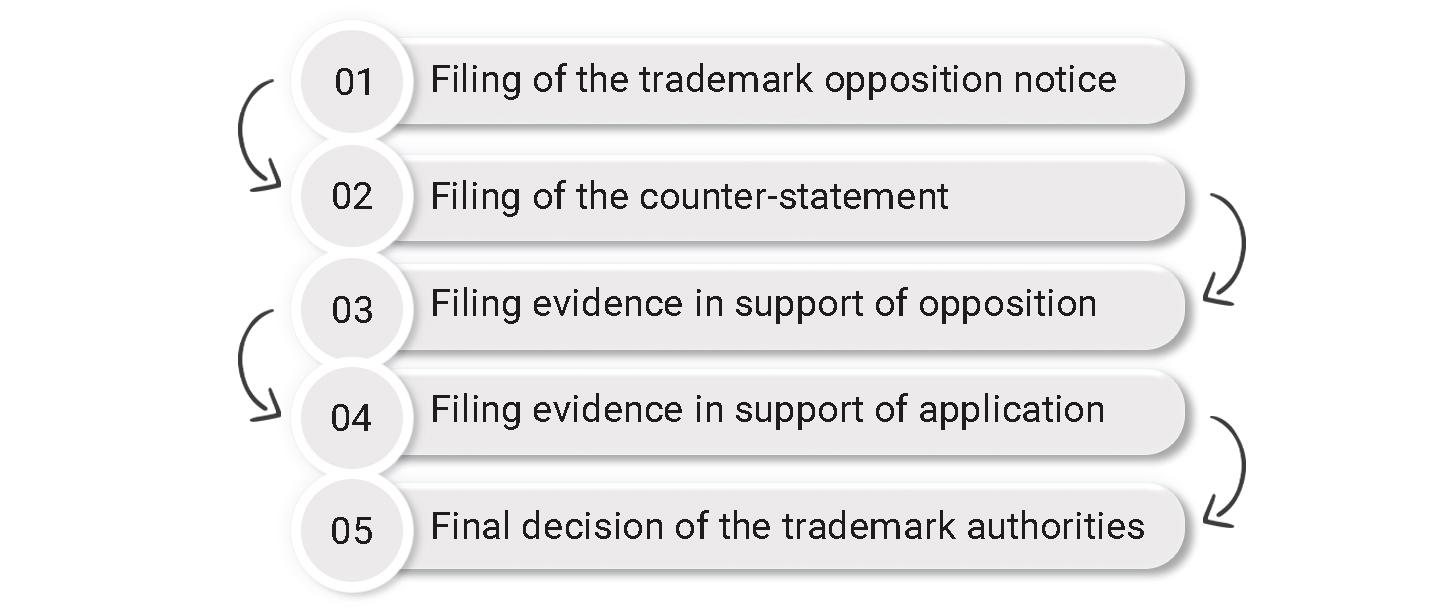
Get a Quote
Get a Quote and Find Services to Fit Your Needs 50000+ Satisfied Clients
5000+ Licenses & Registration
15 Branches across India
75 Years + Combined experience
A Trademark Opposition is filed for opposing a trademark advertised in the journal by the Trademark Registry from registration. It is mainly a way to protect your Trademark from being misused by others or to stop someone from trying to take benefit of your creativity or efforts without your permission. For this, the Trade and Merchandise Marks Act of 1958 was introduced by the government, which was repealed by the Trademark Act of 1999 in the year in the Fiftieth Year of the Republic of India.
A trademark opposition is a legal challenge to the right to register a particular trademark. A trademark opposition is instituted by filing a notice of Opposition with the Trademark Trial and Appeal Board and paying the required Trademark Opposition fee. The notice of Opposition must be filed within three months of the date the trademark application is published for Opposition unless a request for an extension of time to oppose is filed with the Board (which is usually instantaneously granted).
A Brand Logo opposition must allege one or more grounds for challenging a trademark application. For example, suppose you want to know how to file an opposition to a trademark application. In that case, this can be done by someone who owns prior rights in an identical or confusingly similar trademark. But, trademark applications can also be challenged on a number of other trademark opposition grounds.
For instance, the Opposition may be based on the opposer’s belief that the Trademark can be merely descriptive, deceptively misdescriptive, generic, functional, or likely to dilute the distinctive quality of the opposer’s famous Trademark. In addition to alleging a valid ground for Opposition, the opposer must show it has the standing to oppose the application. In other words, the opposer must allege in the notice of Trademark Opposition that it has a direct and personal stake in the outcome of the proceeding and that the registration of the Trademark could harm it.
Shortly after a notice of Trademark Opposition is filed, the Board will institute the opposition proceeding, assign it a proceeding number, and notify both parties of the schedule the Opposition will follow. This schedule informs the parties of many important dates and deadlines by which certain actions must be taken. However, the schedule can be easily amended through mutual agreement between the parties and approval by the Board.
The term “Trademark Opposition” is an objection filed by a third party against a trademark’s registration within the period in which the Trademark in question resides in the journal. To file a trademark opposition notice, the aggrieved person – the one who is opposing the registration of a trademark – has to establish one of the following grounds:

The mark doesn’t have distinct features or characteristics from a registered trademark.
If the Trademark vehemently describes the quality, intended purpose, or product quality, it comes under the grounds of Opposition in India.
The trademarks with certain features similar to an existing brand are considered to have the potential to confuse the public – deceiving them. Such deceptive trademarks can be opposed.
Brand names or devices prohibited under the Emblem and Names Act of 1950 come under the prohibited trademarks.
Common trademarks are general terms used in everyday life. Such marks can face Opposition from a third party.
Certain trademarks that can hurt the sentiment of a particular community come under brand names that can face Opposition on the grounds of being offensive.
One question that often bothers those watching over the legality of brand names is the difference between trademark objection and trademark opposition. There is an array of differences that exist among these brand names, and they are as follows:
|
Trademark Opposition |
Trademark Objection |
|
The issuer of a trademark Opposition notice is a third party. |
The issuer of trademark objection is the Trademark Registrar. |
|
Trademark opposition fees have to be paid during the notice filing procedure. |
No fee is paid by the registrar when delivering the trademark objection notice. |
|
Opposition is raised during the four months of the trademark publication. |
The Notice of Trademark Objection is filed within a month after the trademark application filing. |
|
An Opposition isn’t part of the registration process, but is an obstacle. |
The ratio of trademark objections states that they are necessarily part of the procedure. |
|
After passing of the judgement, the Opponent and the aspirant can file an appeal for re-hearing. |
After the rejection, the applicant can appeal to the trademark appellate authority. |
As you can see, there is an array of complications you might face when opposing a Trademark.
When you are filing the notice of Opposition, trademark laws that exist can put the following complications before you:

The notice you deliver to the person whose brand name you are fighting against has to be informative. It should contain every little detail to help you win your case, no matter how minute.
You only have a limited window within the opposition timeline wherein you must file the notice and expect an answer to the notice of the opposition trademark within three months. However, the longer you wait, the more chances your Opponent will produce the perfect opposition reply by paying the requisite trademark opposition fee.
You will face many legal complexities when Opposition to a Trademark is your concern. These complications aggravate when the brand name you are up against is popular in India.
Facing a trademark opposition notice once you face Opposition is an issue. However, once you start the proceedings according to the Trademark Opposition rules, you are bound to face the following issues:

The counterstatement for TM Opposition in India is your way to fight off your Opponent. However, because your brand is on the line, being thorough in whatever counterstatement TMOpposition format you provide is the least you must be.
After receiving a notice of Opposition, you have a limited window to file a counter statement. Therefore, you must carefully consider your time when drafting the document to help you fight off your Opponent. The Opposition to TM registration can be filed within four months after the Trademark is published. If you lose that window, you will lose your chance to oppose the brand.
If there is one thing you can’t compromise with when walking into the Opposition proceedings, it is evidence. To ensure that the Brand Logo Opposition board rules in your favor, you must assemble all the evidence required for the procedure.
As you can see, whether you are the one initiating the trademark opposition process or are the one who wants to fight against it, you need the aid of trademark registration experts. That is where Registrationwala comes in. We have handled various trademark opposition cases in India throughout our professional experience. Their varying nature and dedication to our Trademark Opposition service providers will be more than enough to help you win your case.
There are two eligibility criteria to remember when diving into the trademark opposition process in India: as an opponent and an aspirant. As a trademark registration aspirant, To be eligible to up against Brand LogoOpposition, you must have all the evidence to support your case.
If you oppose a registered trademark, you must have a case sturdy enough to deal with existing brand names in India. The following are the entities that can become opponents to the trademark registration request:
The following are the documents that are required for Trademark Opposition:

The authorization documents can refer to the Trademark Opposition form 5 or the application or a counterstatement Opposition sample in India, which can be in PDF format.
The evidence you must provide must be thorough. Regardless of how insignificant the evidence might seem, you must provide all the evidence. Even a speck of information can prove reliable during the TM opposition proceedings.
The simple trademark opposition process in India is as follows.
For a complete explanation of what happens during the trademark opposition process in India, refer to the following procedure.

First, the aggrieved person fills out and delivers the trademark opposition notice to the applicant during the months of brand advertisement. The document is derived from the standard notice of opposition trademark sample in India.
After receiving the notice, the applicant must file a counterstatement within two months. The trademark application is abandoned if no counter statement is filed.
The trademark authorities will assess both statements and then ask for evidence.
The Opponent will then file opposition evidence to support their stand of opposing the registration of the Trademark. It should be done within two months of receiving the counterstatement from the applicant. The trademark application will be accepted if the Opponent fails to present the evidence during that time.
Within two months of receiving the opposition evidence, the applicant must provide evidence to support the trademark registration. If the applicant fails to do so, the application will be abandoned.
After receiving the evidence from both sides, the Trademark Authority will conduct a hearing. After hearing both sides of the argument, it will decide.
We at Registrationwala provide end-to-end solutions for Trademark Opposition. Our services include:
Registrationwala.com is a leading legal consultancy firm providing comprehensive services relating to Trademark Opposition. Contact us now if you seek us to represent you in case of Trademark Opposition.
Q1. Where can I download the format for the counterstatement?
A. Using a template for a reply to trademark opposition format is not advisable. You must instead hire a specialist to help you deal with the case of trademark infringement in India.
Q2. How to fight trademark opposition?
A. To fight trademark opposition, you must fill out a counterstatement and the evidence to support your registration.
Q3. How to answer the notice of Opposition in Trademark?
A. To answer the trademark opposition notice, the applicant must file a counter statement within two months of receiving the notice.
Q4. How to avoid Opposition while registering a trademark?
A. There is no direct way to deal with trademark opposition in India. That being said, you can make sure that:
And you have ample evidence to support your claim to your brand name.
Q5. How to settle trademark opposition?
A. Trademark opposition can be settled in either the following ways:
Q6. How long does an Opposition take?
A. The complete procedure of trademark opposition can take up to one year. However, if the case is complex, it can take more time.
Q7. Is it necessary to submit a power of attorney while filing a notice of Opposition?
A. Yes, a power of attorney must be filed while filing the trademark opposition notice.
Q8. Is trademark classification important for filing Opposition?
A. Yes, you must mention the trademark class while submitting the trademark opposition form.